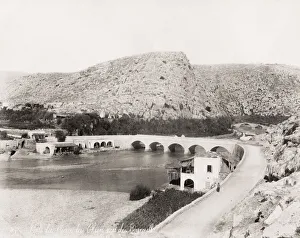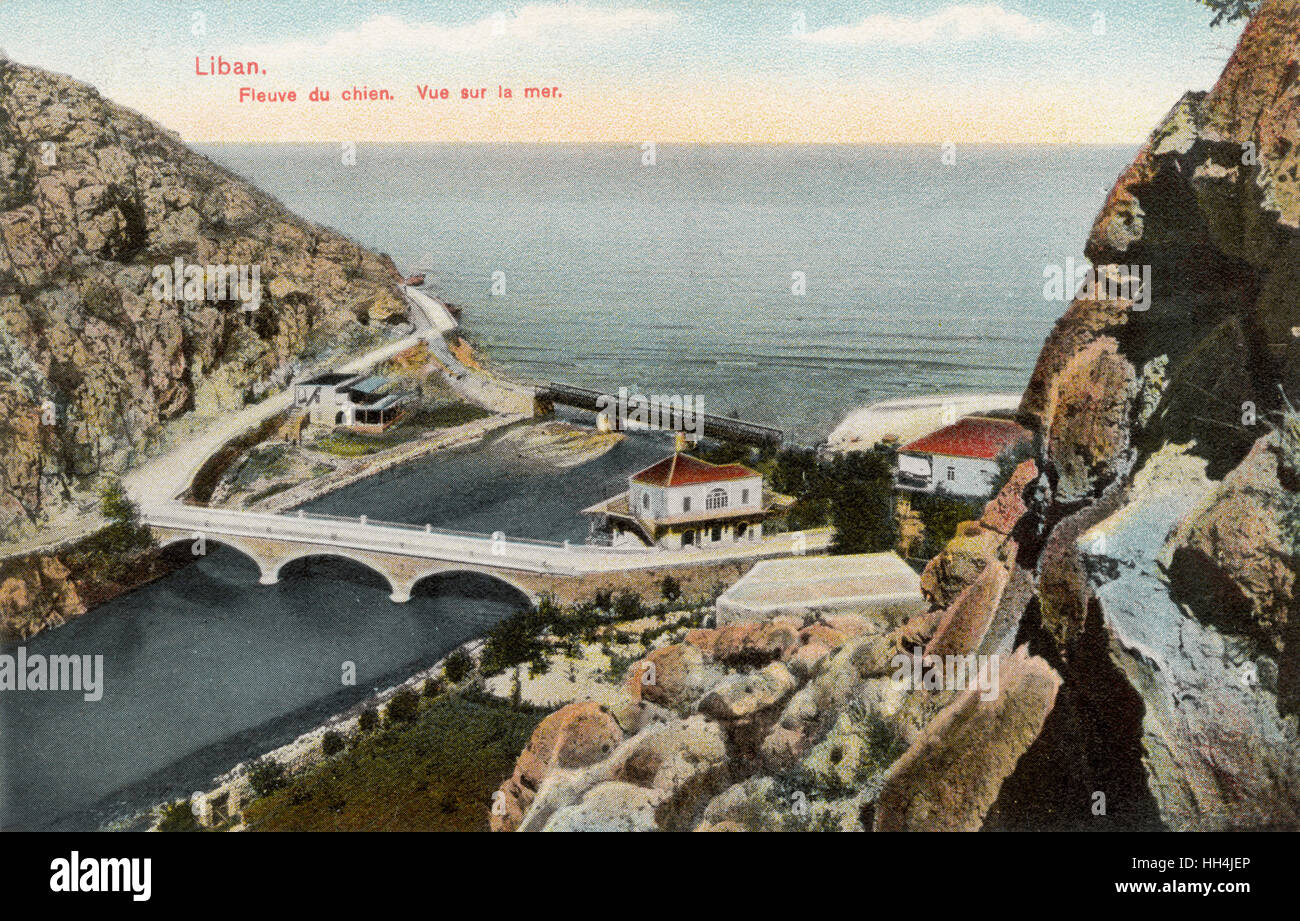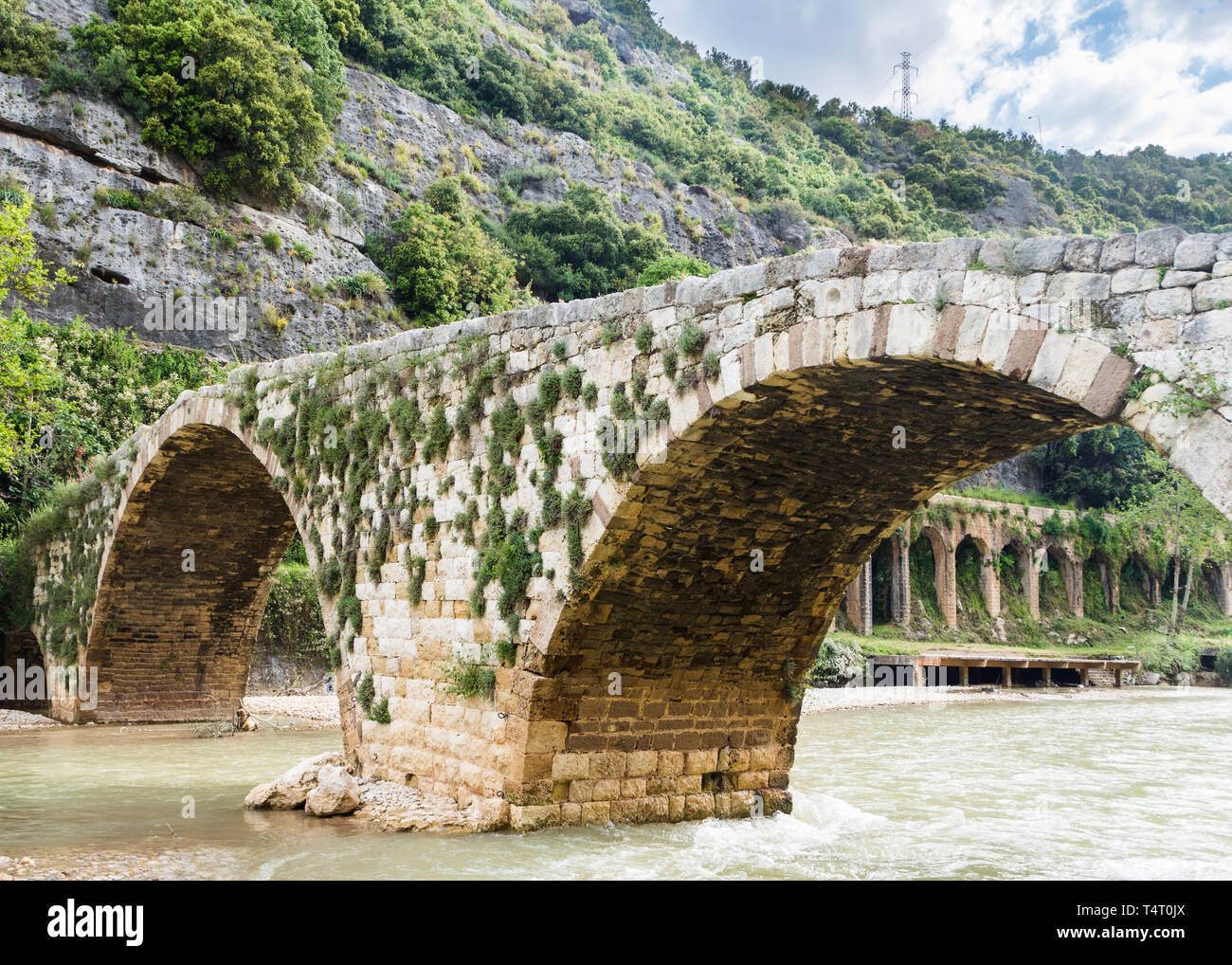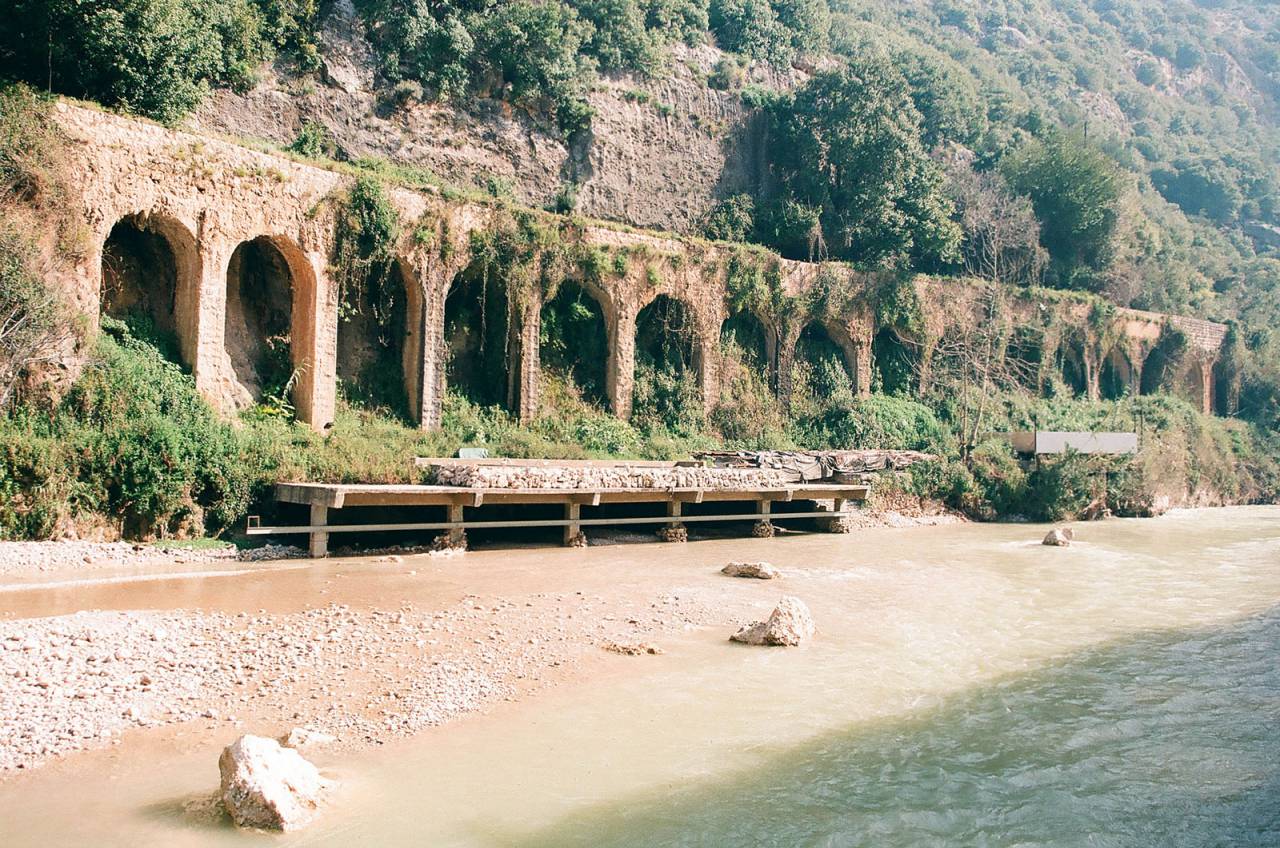Nahr al-Kalb: Lebanon's Ancient River of History

Introduction
Brief history and significance of Nahr al-Kalb in Lebanon
Nahr al-Kalb holds a special place in Lebanese history, serving as a witness to the passage of time and the stories of civilizations that have shaped the land. As you walk along the banks of Nahr al-Kalb, you can't help but feel a sense of awe at the rich history surrounding you. From ancient inscriptions left by Egyptian Pharaohs to the monuments commemorating the victories of various rulers, each stone at Nahr al-Kalb whispers tales of triumph and resilience.
You are immersed in the essence of a place that has witnessed the ebb and flow of empires, yet stands strong and proud, a testament to the enduring spirit of Lebanon. The inscriptions on the rocks remind you that challenges may come, but they also eventually fade away, leaving behind a legacy of strength and perseverance.
Table: Comparison of Nahr al-Kalb with Other Historical Sites
| Aspect | Nahr al-Kalb | Other Historical Sites |
|---|---|---|
| Significance | Witness to diverse civilizations | Reflects specific periods or events |
| Preservation | Well-preserved inscriptions and monuments | Varied levels of preservation and restoration |
| Cultural Impact | Symbol of resilience and endurance | Represents different cultural influences |
| Tourist Appeal | Draws history enthusiasts and explorers | Attracts tourists interested in specific eras |
You can't help but marvel at how Nahr al-Kalb seamlessly weaves together the threads of the past and present, creating a tapestry of cultural heritage that inspires all who visit. As you stand on the banks of the river, you are not just a spectator – you are a part of this living history, contributing your own chapter to the story of Nahr al-Kalb.

Location and Geology
Geographical overview of Nahr al-Kalb
As you explore Nahr al-Kalb's geographical features, you find yourself immersed in a landscape that is not just breathtakingly beautiful but also steeped in history. The river winds its way through Lebanon's rugged terrain, carving a path that mirrors the resilience of the civilizations that once thrived here. Surrounded by lush vegetation and rocky cliffs, Nahr al-Kalb stands as a testament to the enduring power of nature and the ingenuity of humankind.
Formation and characteristics of the ancient river
As you gaze upon the ancient river of Nahr al-Kalb, you can't help but marvel at the forces of nature that have shaped its course over millennia. The gradual erosion of the limestone rocks has created a unique landscape dotted with caves, cliffs, and waterfalls, each telling a story of the river's relentless journey through time. The crystal-clear waters of Nahr al-Kalb flow gently, carrying with them the echoes of the past and the future promises.
As you stand on the banks of Nahr al-Kalb, surrounded by the majestic beauty of the Lebanese landscape, you can't help but feel a sense of optimism and wonder at the interconnectedness of nature and history. Each stone, each tree, and each ripple in the river speaks to a story of resilience, adaptation, and transformation. Nahr al-Kalb is not just a river—it is a living chronicle of the past, present, and future, inviting you to be part of its ongoing narrative.

Historical Inscriptions
Inscriptions and reliefs along the banks of Nahr al-Kalb
As you continue your journey along the banks of Nahr al-Kalb, the ancient inscriptions and reliefs that adorn the rocks beckoning you to unravel their mysteries. These intricate markings, etched into the limestone cliffs by ancient civilizations, serve as a testament to the enduring legacy of the peoples who once thrived in this region.
Each symbol, each figure, tells a story of triumph, resilience, and cultural richness, inviting you to delve deeper into the history that pulsates through the very stones of the river.
Significance of the historical markings
Standing amidst the historical markings that line the banks of Nahr al-Kalb, you are reminded of the profound significance of preserving the past for the benefit of future generations. These inscriptions, some dating back thousands of years, offer a glimpse into the traditions, beliefs, and achievements of those who came before us. They whisper tales of conquerors and sages, warriors and poets, weaving a tapestry of cultural heritage that transcends time and space.
By cherishing and protecting these historical markings, we honour the intricate tapestry of human history and ensure that the stories of Nahr al-Kalb continue to inspire and enlighten generations to come.

Ancient Civilizations
Influence of different civilizations on Nahr al-Kalb
As you meander along the banks of Nahr al-Kalb, the remnants of diverse civilizations whisper tales of their influence and contributions to this historic river. From the Phoenicians, who left their mark with intricate inscriptions and symbols, to the Romans, whose architectural feats still stand proudly nearby, each civilization has woven its story into the tapestry of Nahr al-Kalb. The Greeks, Persians, and Arabs, too, have added their layers of culture and heritage, creating a rich mosaic that reflects the interconnectedness of human history.
Historical events and monuments related to the river
Your journey along Nahr al-Kalb is punctuated by monuments and events that serve as markers of the river's rich past. The Battle of Nahr al-Kalb, where armies clashed in ancient times, echoes through the annals of history, reminding us of the river's strategic importance.
Monuments like the commemorative plaques and statues pay tribute to the brave souls who fought and triumphed on these grounds. These historical markers not only commemorate significant events but also serve as a reminder of the resilience and spirit of the civilizations that once called Nahr al-Kalb their home.

French Mandate Era
French colonial influence and constructions along Nahr al-Kalb
As you explore the meandering path of Nahr al-Kalb, the remnants of the French Mandate era stand as testaments to a time of colonial influence and construction. The French, with their eye for architectural grandeur, left behind bridges, roads, and structures that blend seamlessly with the river's natural beauty. These constructions serve as functional pathways and add a touch of European elegance to the landscape, creating a unique fusion of cultures along the banks of Nahr al-Kalb.
Legacy of the French mandate period on the river
Your journey along Nahr al-Kalb is enriched by the legacy of the French mandate period, which continues to influence the river's identity to this day. The administrative buildings and landmarks established during this era reflect a commitment to modernization and development that has left a lasting impact on the region.
The French mandate may have ended, but its legacy lives on in the cultural fabric of Nahr al-Kalb, intertwining with the narratives of past civilizations to create a tapestry of history that is both diverse and vibrant.

UNESCO World Heritage Site
Nahr al-Kalb as a potential UNESCO World Heritage Site
As you delve deeper into the rich history and cultural significance of Nahr al-Kalb, the idea of it becoming a UNESCO World Heritage Site becomes increasingly compelling. The layers of civilizations that have thrived along its banks, from ancient Egyptians to the French mandate era, create a tapestry of human achievement and resilience that deserves global recognition. The unique blend of natural beauty and man-made structures along the river's path tells a story of cultural exchange and innovation that transcends borders and time.
Efforts to preserve and protect the ancient river
Your journey along Nahr al-Kalb is not only a discovery of the past but also a commitment to safeguarding its future. Preservation efforts aimed at protecting the ancient river's historical landmarks and ecological diversity play a crucial role in ensuring that future generations can continue to learn from its legacy.
By engaging in conservation initiatives and promoting sustainable practices, we can secure a vibrant and thriving environment that honors the heritage of Nahr al-Kalb for years to come.

Modern Significance
Recreational activities and tourism at Nahr al-Kalb
As you explore the banks of Nahr al-Kalb, you're greeted with a plethora of recreational activities and tourism opportunities that highlight the river's modern significance. From leisurely walks along its promenades to adventurous hikes up its surrounding hills, there's something for everyone to enjoy.
The picturesque scenery and tranquil ambience provide the perfect backdrop for picnics, photography, and bird-watching, making it a popular destination for locals and tourists alike.
Contemporary uses of the river in Lebanon
Your journey along the ancient river of Nahr al-Kalb also unveils its contemporary uses in Lebanon. Beyond its historical and cultural value, the river serves as a vital water source for irrigation, supporting agricultural activities in the region. Additionally, its proximity to urban centres has led to the development of recreational facilities, waterfront cafes, and cultural events that further integrate the river into the daily life of the local communities.
By embracing the river's multifaceted role in modern society, we can foster a deeper appreciation for its enduring legacy and ensure its continued preservation for generations to come.

Environmental Concerns
Challenges facing the preservation of Nahr al-Kalb
As you delve deeper into the importance of preserving Nahr al-Kalb, you encounter various challenges that threaten its environmental integrity. Urbanization and industrialization along its banks pose a risk of pollution and habitat destruction, impacting the delicate ecosystem that relies on the river.
Climate change further exacerbates these challenges, with changing weather patterns affecting water quality and biodiversity. Balancing the need for development with the imperative of conservation presents a complex dilemma that requires careful planning and sustainable practices to safeguard the river's future.
Efforts towards environmental conservation and sustainability
Your journey towards environmental conservation along Nahr al-Kalb reveals a ray of hope amidst the challenges. Local communities, environmental organizations, and government authorities have joined hands to implement measures aimed at preserving the river's ecosystems and promoting sustainable practices. Initiatives such as pollution control measures, reforestation projects, and educational campaigns raise awareness about the importance of protecting this natural resource.
By fostering a sense of stewardship among the populace and instituting policies that prioritize sustainability, strides are being made towards ensuring that Nahr al-Kalb remains a thriving and resilient ecosystem for future generations to cherish.
